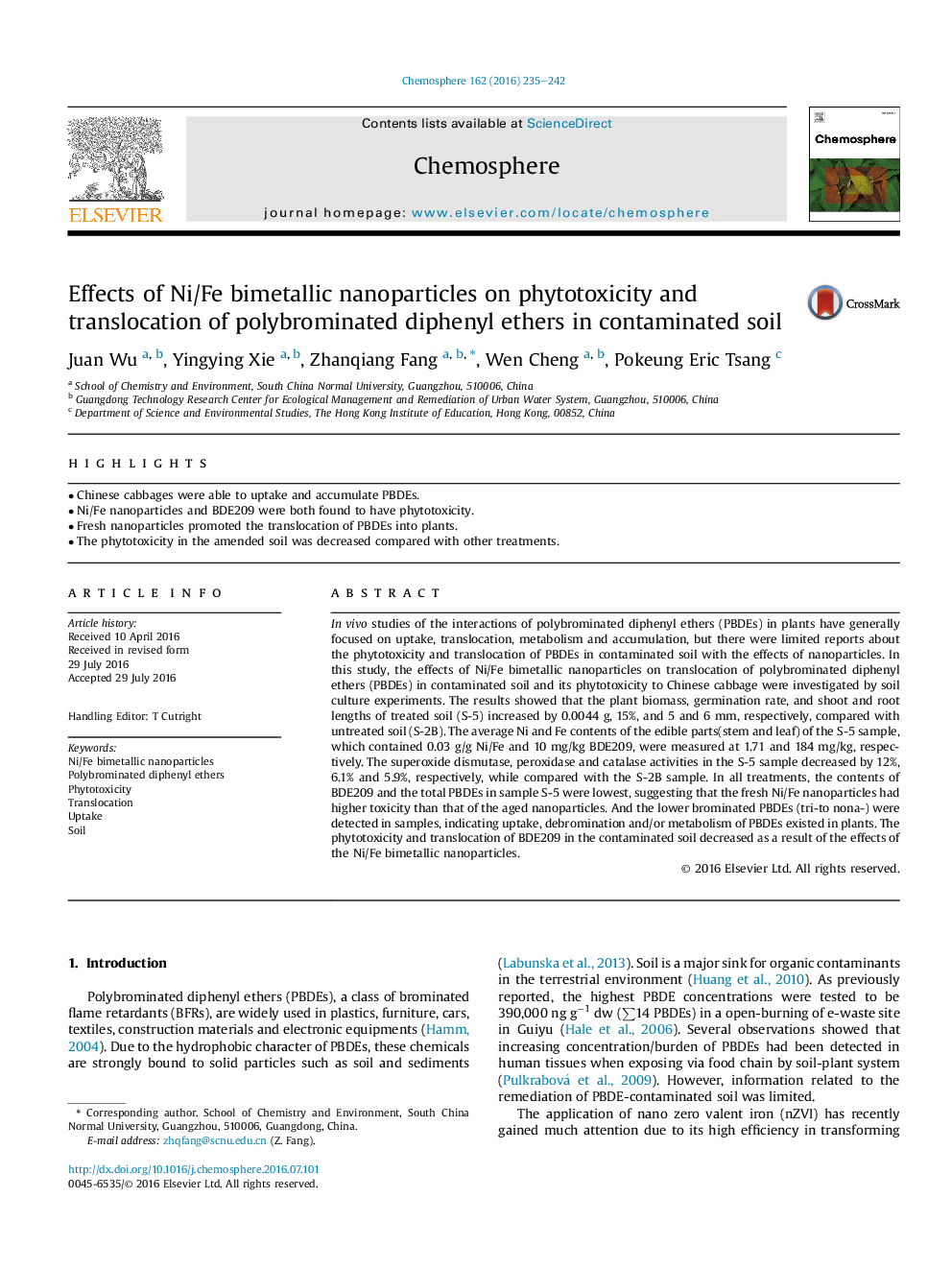| Article ID | Journal | Published Year | Pages | File Type |
|---|---|---|---|---|
| 6306194 | Chemosphere | 2016 | 8 Pages |
Abstract
In vivo studies of the interactions of polybrominated diphenyl ethers (PBDEs) in plants have generally focused on uptake, translocation, metabolism and accumulation, but there were limited reports about the phytotoxicity and translocation of PBDEs in contaminated soil with the effects of nanoparticles. In this study, the effects of Ni/Fe bimetallic nanoparticles on translocation of polybrominated diphenyl ethers (PBDEs) in contaminated soil and its phytotoxicity to Chinese cabbage were investigated by soil culture experiments. The results showed that the plant biomass, germination rate, and shoot and root lengths of treated soil (S-5) increased by 0.0044 g, 15%, and 5 and 6 mm, respectively, compared with untreated soil (S-2B). The average Ni and Fe contents of the edible parts(stem and leaf) of the S-5 sample, which contained 0.03 g/g Ni/Fe and 10 mg/kg BDE209, were measured at 1.71 and 184 mg/kg, respectively. The superoxide dismutase, peroxidase and catalase activities in the S-5 sample decreased by 12%, 6.1% and 5.9%, respectively, while compared with the S-2B sample. In all treatments, the contents of BDE209 and the total PBDEs in sample S-5 were lowest, suggesting that the fresh Ni/Fe nanoparticles had higher toxicity than that of the aged nanoparticles. And the lower brominated PBDEs (tri-to nona-) were detected in samples, indicating uptake, debromination and/or metabolism of PBDEs existed in plants. The phytotoxicity and translocation of BDE209 in the contaminated soil decreased as a result of the effects of the Ni/Fe bimetallic nanoparticles.
Related Topics
Life Sciences
Environmental Science
Environmental Chemistry
Authors
Juan Wu, Yingying Xie, Zhanqiang Fang, Wen Cheng, Pokeung Eric Tsang,
